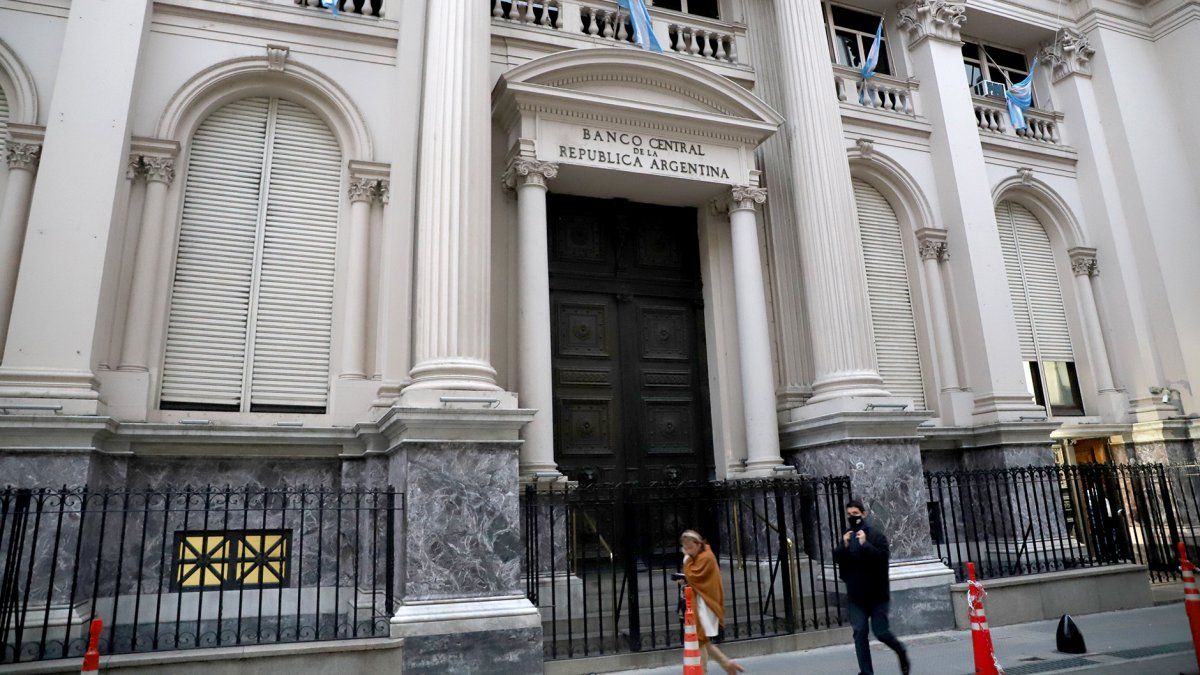The level of liabilities of the Central Bank (BCRA) and the quasi-fiscal deficit associated with them reach a worrying level on the balance sheet of the monetary regulator. His evolution seems unstoppable and, although since 2019 (when Alberto Fernández said that with the money from these instruments he would pay retirees more) he has been sneaking into the campaign’s economic issues, it seems difficult to find a solution. In fact, in this Sunday’s debate, the libertarian candidate Javier Milei asked his opponent Patricia Bullrich what his proposal was to dismantle the problem of the Liquidity Bills (Leliq), but he did not know how to answer.
For the economist Fabio Rodriguezdirector of MyR Asociados, “This is one of the variables that express, in a paradigmatic way, how destroyed the BCRA balance sheet is.taking into account the level of liabilities, which are on track to represent around 12% of the Gross Domestic Product (GDP),” he tells Ambit.
“The banks know that they can remunerate depositors without any problems because, ultimately, they turn around and ask the BCRA for those pesos,” says the director of Consultora Sarandí, Sergio Chouza.
The Leliq: origin and evolution
They were created in January 2018, during the presidency of Federico Sturzenegger at the head of the BCRA and in order to keep the monetary issue stable, since they are debt securities, which are in the hands of the banks and the BCRA pays them monthly interest. of 118% (annual nominal rate) for them.
As the economist explains Christian Butler, The big problem is that “the interest generated by remunerated liabilities is an endogenous emission and generates strong growth in the stock of pesos.” Thus, the interests of the Leliq and passes result in an increase in issuance (although it is not externalized, but is endogenous). The truth is that the participation of Leliq and repos in the BCRA balance does not stop growing.
At the moment, is around $21 trillion (more than US$60,000 million), a very high level, especially with respect to the current volume of reserves, which are about US$26,920 million (thus tripling them) and represent, in right now, around three and a half times the monetary basewhich has been reducing in recent months, adjusted for seasonality and constant prices, due to lower demand for pesos by the market, in contrast to passes and Leliqs, which are growing.
Quasi-fiscal deficit and fiscal deficit: a close relationship
The reason behind this quasi-fiscal dynamic is precisely the fiscal dynamic. That is, a need for Treasury financing that exceeds the capacity to generate resources.
That is why Chouza points out that “the stock will continue to increase as we have a deficit and as long as there is a deficit position in Argentina in fiscal matters and the Treasury finds a limit in financing itself through the market.”
Thus, some analysts warn that “to the extent that the Treasury’s financing needs are not consistently reduced, the mere increase in Central Bank rates only makes its remunerated debt more expensive and, over time, the need for resources generated by the “The growth of these interests paid by Leliqs and passive repos takes on an autonomous, endogenous dynamic.”
bcra.jpg
The level of participation of the Leliq in the BCRA balance sheet is of concern.
Ignacio Petunchi
“It is a vicious circle that Argentina entered many years ago,” says Buteler. And some consulting firms already estimate that, by the end of the year, the stock of paid liabilities could grow by around $10 trillion more (almost $31 trillion), so the interest cost for all of 2023 would exceed $15 trillion (an average of $1.2 trillion per month).
According to the economist Sebastian Menescaldi, from Eco Go, “the issuance is not only the monetary base, but also all the pesos that the BCRA withdraws in a context in which the demand for currency is at very low values.”
In short, Chouza warns that, “today, the BCRA’s quasi-fiscal deficit is at maximum levels, not far behind the 2018 level, but already exceeding that volume.” And one of the big problems of this dynamic that economist Federico Glustein warns is that “the growth of these liabilities enhances overheated devaluation and inflationary expectations, given the serious risk that these pesos will be released and dumped into the market at some point.” .
And the other big problem is that, while seeking to raise the interest rate to control the dollarization of pesos, raising that yield makes “the Leliq a mountain that is permanently renewed and causing the exchange rate to lag behind, appreciating. and demanding more dollars.”
Does the Leliqs ball have a solution?
This is how the much talked about “Leliqs ball” increases, which no one knows how to disarm. There was talk of a Bonex Plan, the sale of debt to foreign funds and the need to develop the capital market as possible alternatives.
For the moment, for Chouza, “the BCRA’s liabilities are not at exorbitant levels and do not exert pressure that is impossible to manage until now.” He considers that, if a government goes towards a gradual macro normalization scheme, it is not an unmanageable problem, but he warns that this can only be addressed in a framework with fewer macroeconomic imbalances in which the lack of anchors is resolved. “A solution would be, in a different context, to think of a martingale along the lines of a long-term conversion with an exchange mechanism for securities, but it would be for another macro context,” he says.
The problem is that The Treasury does not manage to absorb all of the pesos in circulation with long-term instruments and what ends up channeling the banking system is neutralized via Leliq and repos, which are short instruments, without credit risk for the private sector and that guarantee the stability of the deposits. That should be resolved in the next government administration.
Source: Ambito
I am a 24-year-old writer and journalist who has been working in the news industry for the past two years. I write primarily about market news, so if you’re looking for insights into what’s going on in the stock market or economic indicators, you’ve come to the right place. I also dabble in writing articles on lifestyle trends and pop culture news.




